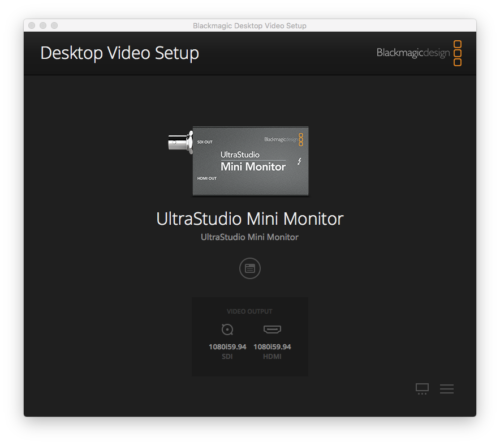
- #Install blackmagic desktop video install#
- #Install blackmagic desktop video drivers#
- #Install blackmagic desktop video software#
- #Install blackmagic desktop video password#
However, there are some limitations under MacOS 11.0 Big Sur. Image credit: Blackmagic Design Blackmagic Desktop Video 12.0īlackmagic Desktop Video 12.0 supports DeckLink, UltraStudio and Intensity products on Windows, Linux and Mac platforms. The latest Blackmagic Desktop Video 12.0 finally supports the latest M1-powered Macs and offers compatibility with many different hardware devices and applications. To be able to output a legal video signal from your computer, you will most likely need some kind of external hardware that supports correct 10bit Rec.709 video signals Blackmagic, of course, has a whole range of solutions on offer that can do just that (and more): Their Ultrastudio line of I/O devices, for example. Blackmagic Desktop Video 12.0 is available for download free of charge.
#Install blackmagic desktop video drivers#
keyboard_arrow_rightCameras of the Yearīlackmagic Design has just released an updated version of their suite of desktop video drivers for several of their hardware solutions to output proper video signals. keyboard_arrow_rightGear Guides by Budget. keyboard_arrow_rightGear Guides by Type. More information on system extensions (like Blackmagic drivers) on Apple. Click to "Allow" the Blackmagic Desktop Video installer to continue. If the lock in the bottom left corner is locked, unlock by clicking it. Open the Apple menu ❯ System preferences ❯ Security & Privacy. You may have to open the Security & privacy preferences to allow the drivers to be installed and this is done by:. #Install blackmagic desktop video install#
Open your downloaded drivers and install. Restart your Mac for the changes to take effect. #Install blackmagic desktop video software#
Select Reduced Security, enter your administrator user name and password, then do select the “Allow user management of kernel extensions from identified developers” checkbox to allow installation of software that uses legacy kernel extensions, select the “Allow remote management of kernel extensions and automatic software updates”.If the disk is encrypted with FileVault, click Unlock, enter the password, then click Unlock
 Select the startup disk you want to use to set the security policy. In macOS Recovery, choose Utilities ❯ Startup Security Utility.
Select the startup disk you want to use to set the security policy. In macOS Recovery, choose Utilities ❯ Startup Security Utility. #Install blackmagic desktop video password#
If requested, enter the password for an administrator account.
Press and hold the power button until you see “Loading startup options.". On the Mac with Apple silicon, choose Apple menu ❯ Shut Down. If you do not have an Apple Silicon (Apple processor) computer you can skip these 9 steps To find out if your Mac is equipped with an Apple silicon (Apple processor) or Intel processor, see: Mac computers with Apple silicon. On a Mac with Apple silicon (Apple processor), you may first need to use change the security policy to allow user management of kernel extensions. You can also download and install the Blackmagic capturing device drivers manually: Go to Blackmagic Design download page, in the lower left corner, press "Download only". When starting LiveReplayer and no Blackmagic capturing device drivers is installed on your Mac, you will automatically be directed to a link for downloading the drivers. Installing Blackmagic Desktop Video drivers To find out if your Mac is equipped with an Apple silicon or Intel processor see: Mac computers with Apple silicon ”Blackmagic Design UltraStudio Recorder 3G”, see Blackmagic Design product page. For Apple silicon (Apple processor) computers: For Macs equipped with an Apple silicon you will need the next generation of ”BlackMagic UltraStudio Mini Recorder” capturing device, i.e. Drivers: Blackmagic Desktop Video (If you want to use a Blackmagic capture device). 
For an interlaced output signal you can (i) either downgrade your macOS to Big Sur or (ii) add and connect a converter to your Mac output For use with Blackmagic capturing device:

Note: macOS 12 (Monterey) does (today: ) not support interlaced (e.g.
Operating system: macOS version 10.13 or later.







 0 kommentar(er)
0 kommentar(er)
